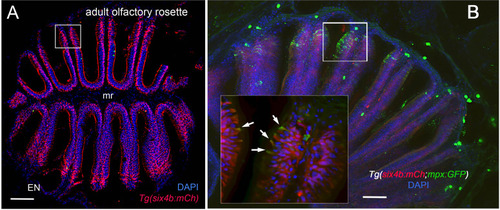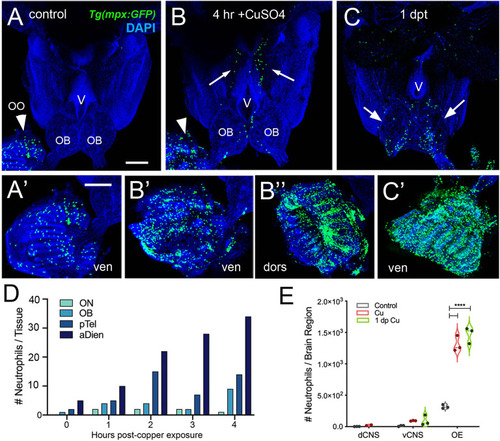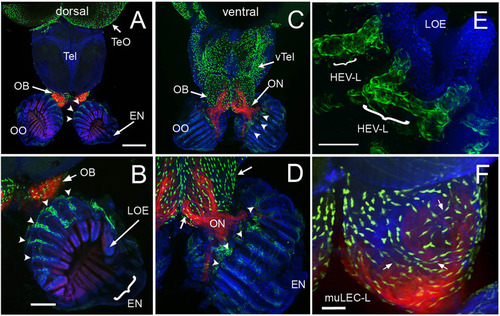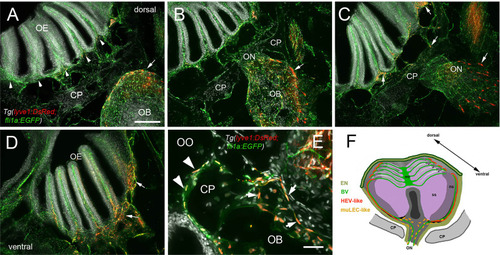- Title
-
The Olfactory Organ Is a Unique Site for Neutrophils in the Brain
- Authors
- Palominos, M.F., Calfún, C., Nardocci, G., Candia, D., Torres-Paz, J., Whitlock, K.E.
- Source
- Full text @ Front Immunol
|
Neutrophils are found only in the olfactory organs of the adult brain. |
|
Sustentacular cells in the OE are associated with markers for neutrophils. |
|
Exposure to copper is correlated with increased neutrophils in the peripheral and central nervous system. |
|
Damage induces cell proliferation of OSN and of neutrophil precursors in the adult olfactory organ. |
|
The olfactory organs have an extensive lymphatic vasculature. |
|
Blood (BV) and Lymphatic (LV) Vasculature wrap the olfactory organs (OO). |
|
Blood vasculature extends through cribriform plate with muLEC-like lymphatic cells. |
|
Olfactory organs have unique neutrophil population. Schematic of olfactory organs (OOs), olfactory bulbs (OB) and telencephalon highlighting the association of the neutrophils (green) with the olfactory sensory neurons (purple). Neutrophils PC in the OO appeared in the CNS associated with posterior OB and ventricle. |








